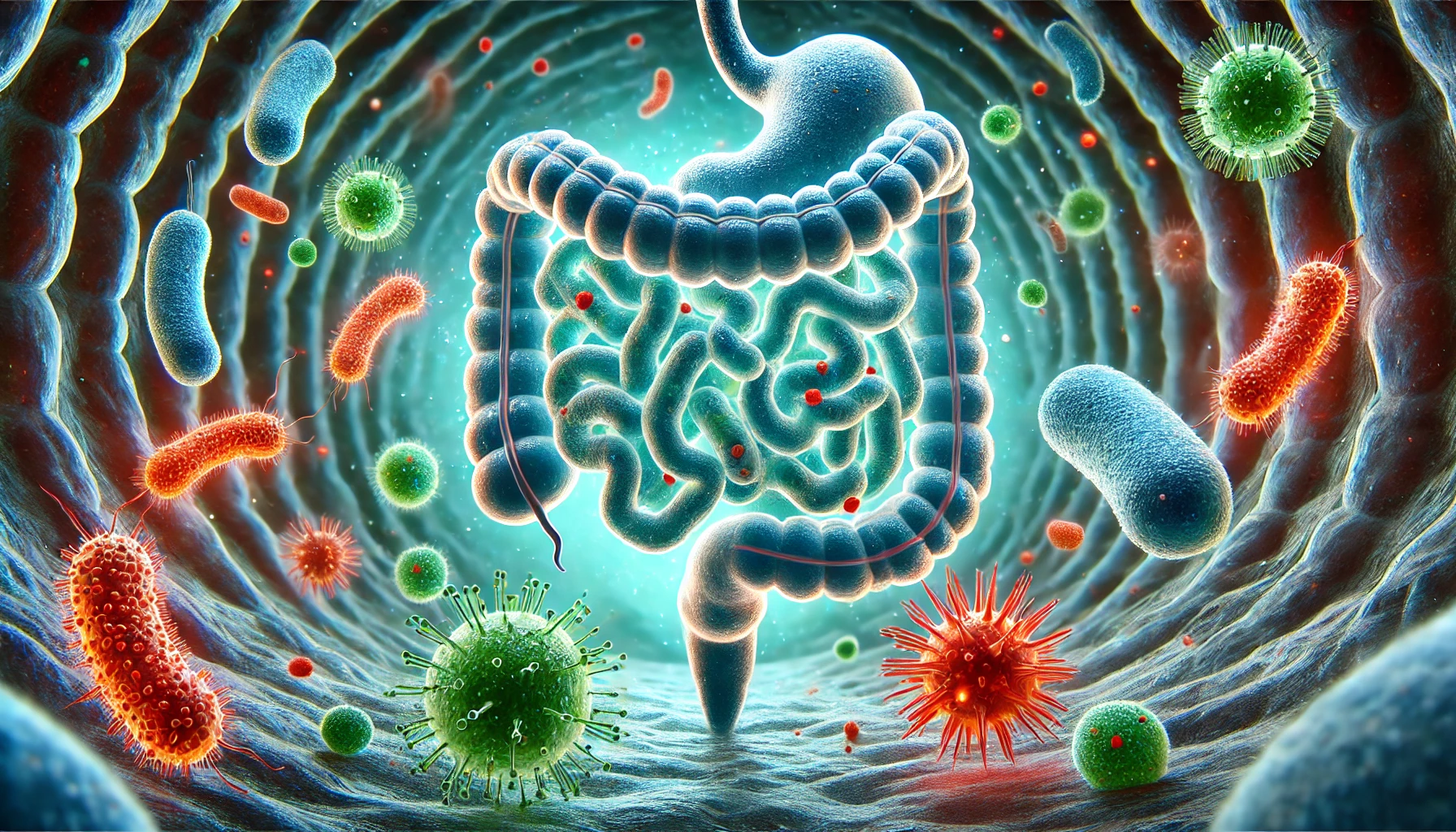Clostridia – the most common cause of flatulence and diarrhea
Our intestinal flora is a complex ecosystem in which countless microorganisms work together to aid digestion and promote health. But not all bacteria are harmless – some can cause serious problems. Clostridia are one of these potentially problematic bacteria. While they are part of the natural microbiome in small numbers, overgrowth can have serious health consequences.
From digestive problems and food intolerances to serious illnesses such as botulism or tetanus – clostridia are resistant bacteria that are often difficult to combat. In this article, you will find out what causes lead to an increased clostridial load, what symptoms can occur and which therapeutic approaches help to restore the natural balance in the gut.
What are clostridia?
Clostridia are bacteria that – with a few exceptions – live in an anaerobic environment, i.e. without oxygen. There are different species and, depending on the species, these bacteria can also have very different colonization sites and stronger or weaker effects.
Botulism or tetanus, for example, are also triggered by specific clostridia and cause severe symptoms that require rapid treatment. Clostridia are very resistant to temperature fluctuations and chemical stimuli, so it is sometimes very difficult to “get rid” of these bacteria if treatment is not approached in the right way.
In addition, they are able to produce substances that are toxic or harmful to the body, such as biogenic amines and enterotoxins. This means that they can not only “poison” the intestines, but also put a strain on the entire organism. In addition, they lead to irritation and, as a result, inflammation of the mucous membranes, which in turn usually causes leaky gut syndrome as a consequence.
A small number of clostridia can be tolerated in the intestinal flora of a healthy person without causing symptoms. They are mainly found in the intestinal flora of the large intestine.
Causes of propagation
There are a variety of causes of elevated Clostridium species.
Diet too high in fat and protein
Clostridia feed mainly on fats and proteins. If the diet therefore consists of too much fat and protein, the clostridia have plenty of nutrients to grow and thrive.
Insufficient chewing and/or stomach problems
Food should be sufficiently broken down in the mouth and protein pre-digestion takes place in the stomach using special enzymes. If a person does not chew sufficiently, then too large “chunks” of food enter the digestive tract. The larger the chunks, the more difficult it is to digest and the longer digestion takes. The longer digestion takes, the longer the clostridia have time to eat their fill of the chunks.
And does the stomach has its problems/discomfortthen the proteins are not properly pre-split and are therefore naturally more available for the clostridia. (see above)
The digestive organs as a whole can, of course, be one of the causes of an imbalance in the intestinal flora.
Medication – especially antibiotics
Taking medication, especially antibiotics, leads to the “killing off” of healthy bacteria in the gut – such as lactobacilli or bifidobacteria. If these are killed off, the clostridia use the space and spread there. Clostridia and lacto-/bifido-/bacteroides strains are like antagonists in the intestine.
You can assume that the clostridia count rises after every antibiotic intake – and the antibiotic intake may have taken place 20 years ago. If the clostridia problem was not subsequently dealt with at that time, or if the circumstances were generally unfavorable, they see no reason to disappear from the intestine and remain there for years or decades.
What kind of complaints do they make?
Above all, they can produce gases, i.e. there is almost always an increased development of flatulence – Air in the abdomen, a tense belly that can make some people look as if they are pregnant.
They can also cause diarrhea even severe diarrhea in some cases.
And according to all experience – the longer the clostridia are present in the intestine in increased numbers, the more foodintolerances andintolerances develop. This means that many foods – not just dairy products, foods containing histamine or fruit – become more and more intolerable and the body reacts with abdominal pain, air production and diarrhea.
Since the clostridia are also able to produce histamine, the symptoms of histamine intolerance can occur. It is therefore not necessary to have a real histamine intolerance, only the additional histamine produced by the clostridia can result in more histamine being produced than there is degradation material (DAO), so that the symptoms of a histamine intolerance can occur.
In addition, the substances they produce can reach the liver via the bloodstream and also put a strain on it, which can lead to increased tiredness and weakness.
They are also capable of producing precancerous substances, so there are links between bowel cancer and breast cancer and the clostridia.
Therapy & hope
That all sounded very bad, but there are of course very good and harmless therapeutic options for decimating the number of clostridia again. Unfortunately, I keep seeing patients who have already undergone “bowel cleansing” and report “It didn’t help!”. Unfortunately, treatment with probiotics (lactobacilli, bifidobacteria, etc.) has little or no effect as long as the clostridia are still present in excessive numbers.
I therefore strongly recommend, for an effective and thorough therapy: first eliminate clostridia, then prescribe probiotics. This order should be adhered to, as otherwise intestinal rehabilitation is only expensive and does not achieve the desired effect.
Trust your instincts and try out other holistic forms of therapy. Healing takes place in many ways, not just one.


Leave A Comment